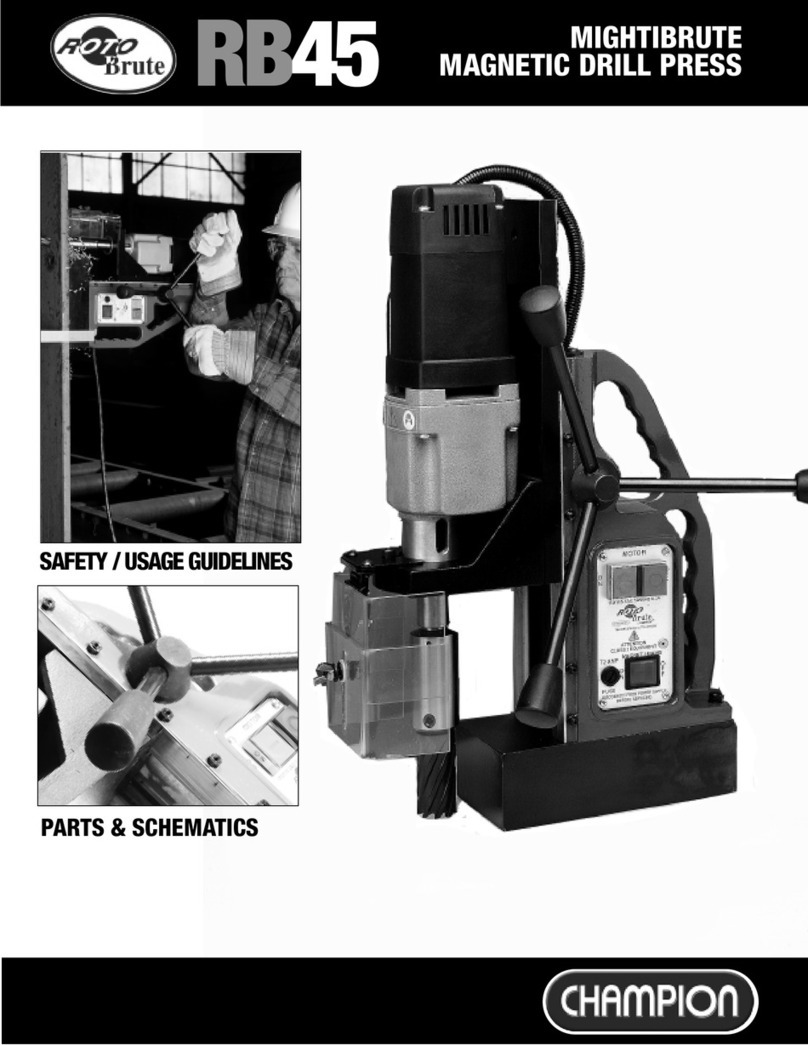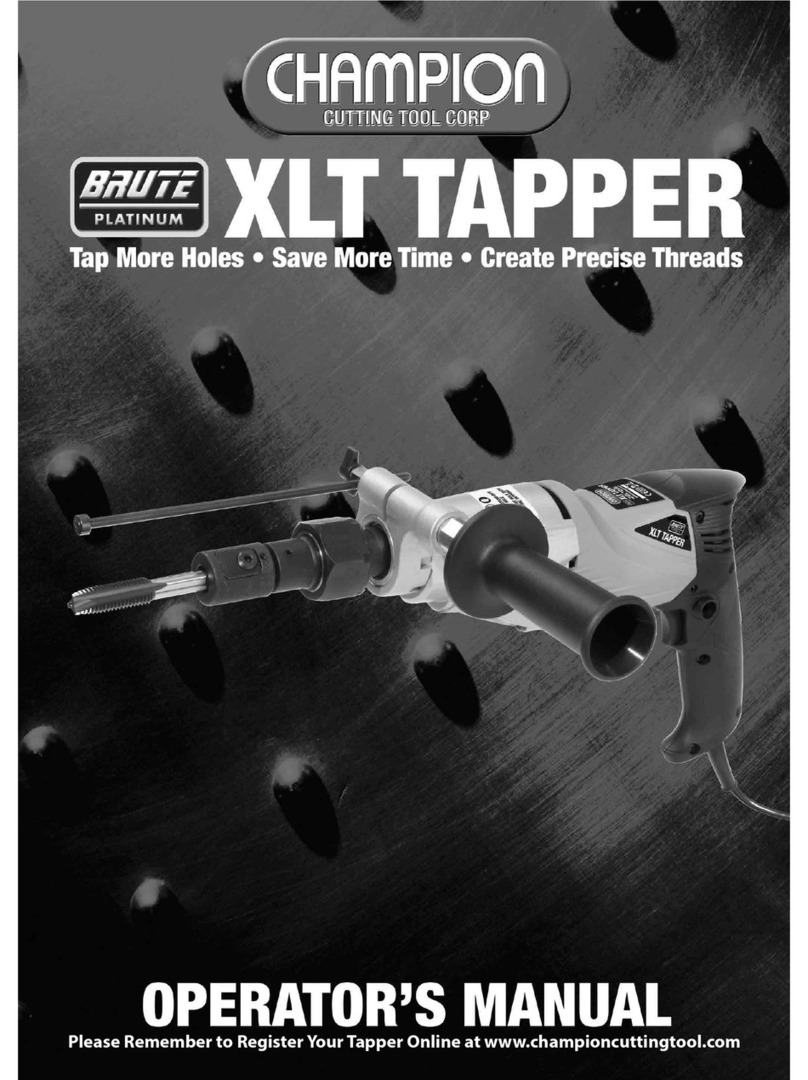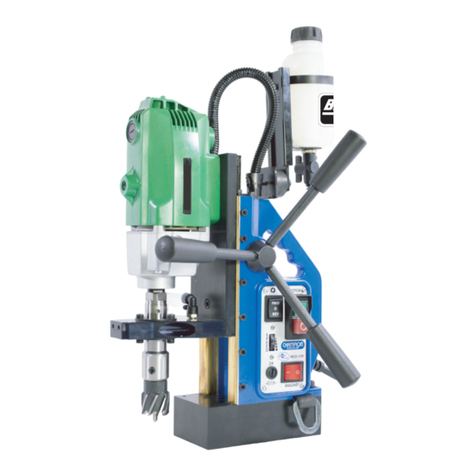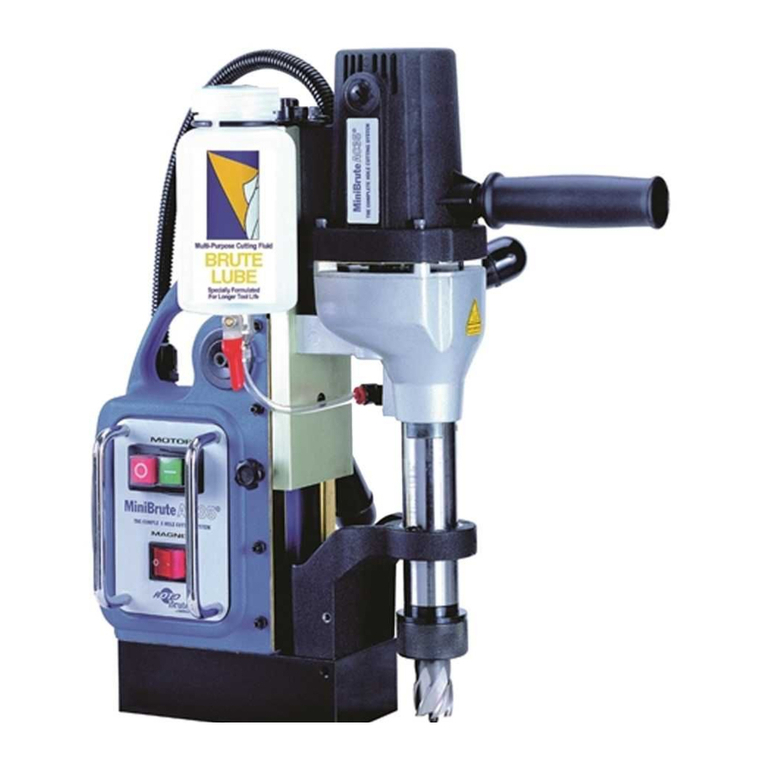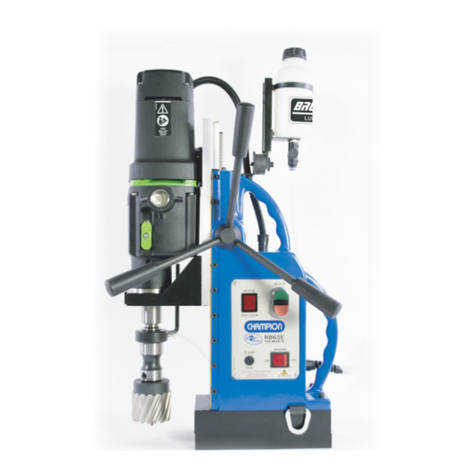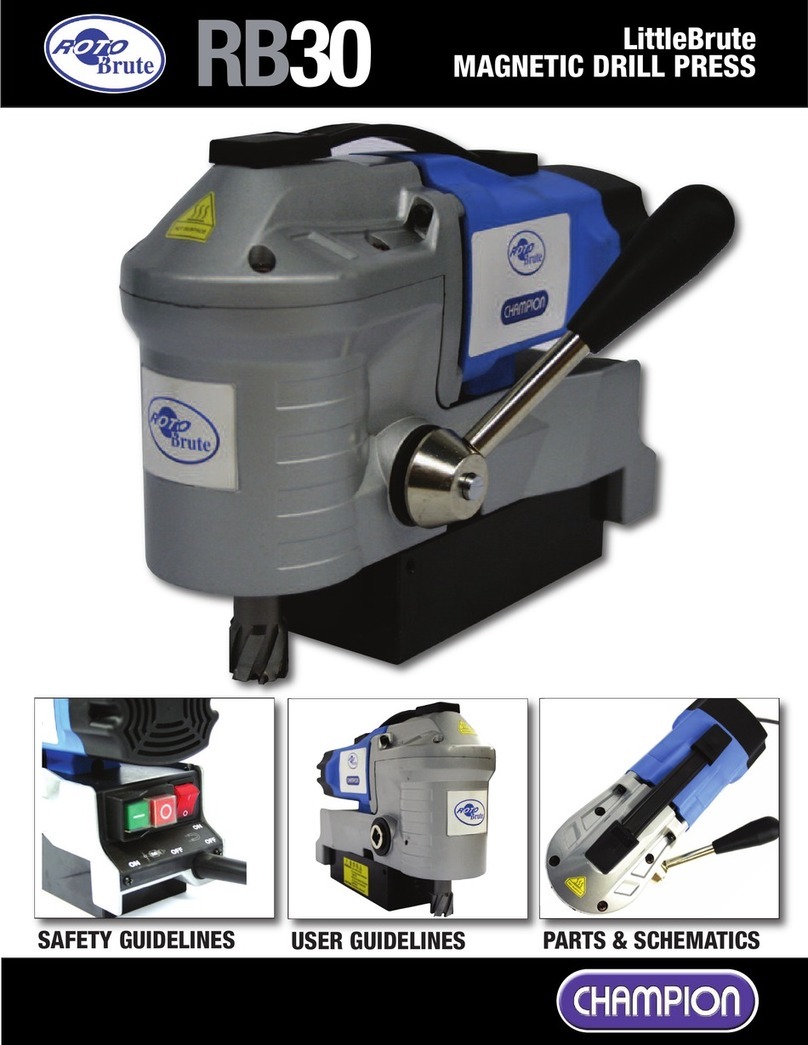
Référence : M2299
Faites sortir le verrou (le verrou avec les bagues Seger
aux extremités) du ressort de cliquet (cylindre de
transmission) en frappant avec un cylindre en acier
long et étroit. Pour faire ça, placer la pince sur deux
blocs en bois a n de laisser sortir le verrou librement
par l'autre côté.
Take out the pin of the transmission cylinder (the pin
with Seger rings on its ends) by hitting it with a long and
narrow steel cylinder. To do this, place the assembly
tool on two pieces of wood in order to let the pin come
out freely.
Quitar el pasador de la uña (pasador con anillos
Seger en sus extremos) golpeándolo con un punzón
de cabeza plana. Para hacer esto, colocar la prensa
encima de dos trozos de madera con el n de que el
pasador salga libremente por el otro lado.
Après le verrou du ressort de cliquet (cylindre de
transmission) est sorti, faites sortir la poignée et retirer
de sa extremité le cylindre de transmission et son
ressort. Si le verrou est abîmé ou courbé (pièce à
gauche de la photographie) ou 1 'extremité pointue
du cylindre de transmission est abîmé (pièce à droite
de la photograhie ), remplacez les pièces abîmées
par un nouveau set du ressort de cliquet (cylindre de
transmission).
After taking the pin of the transmission cylinder
out, take out the lever and take away from its end
the transmission cylinder and its spring. If the pin is
damaged or bended (part on the left side of the
picture) or the sharp end of the transmission cylinder is
very worn, eroded or damaged (part on the right side
of the picture ), replace them by a new transmission
cylinder set.
Una vez retirado el pasador de la uña, sacar la
palanca y retirar de su extremo la ua y su muelle. En el
caso de que se observe que el pasador estâ daado
o doblado (pieza de la izquierda en la ilustración) o
la punta de la ua estâ muy desgastada (pieza de la
derecha en la ilustración), sustituir dichas piezas por un
nuevo conjunto de uña.
INSTRUCTIONS DE MAINTENANCE
INSTRUCTIONS FOR MAINTENANCE
INSTRUCCIONES DE MANTENIMIENTO
La pince de montage souffre des efforts très importants et, avec le temps, elle peut se casser. Nous vous donnons ci-dessous
des instructions de maintenance et réparation. On peut voir les pièces detachées à la n de ces instructions.
The assembly tool suffers important forces and it can break after sorne time. We give you below some advice about its correct
maintenance and how to repair the most common breakdowns. At the end of these instructions, you can see the spare parts.
La prensa de monta je esta sometida a esfuerzos importantes y, con el tiempo, puede estropearse. A continuación, les damos
unos sencillos consejos para su correcto mantenimiento y para la reparación de las averias que pueden ocurrir con mayor
frecuencia. Al nal de estas instrucciones, se describen los recambios.
PROBLEMA 1 : Cuesta mucho accionar la palanca o al accionarla el eje (cremallera) no avanza.
PROBLEM 1 : It is very difcult to operate the lever or when you operate it the slide shaft doesn't move.
PROBLEME 1: ll est très difcile actionner la poignée ou quand vous la actionnez la crémaillère n'avance pas.
1
2
SOLUTION / SOLUTION / SOLUCIÒN
